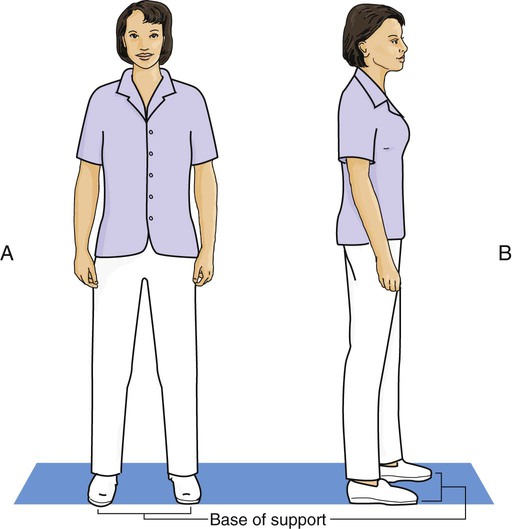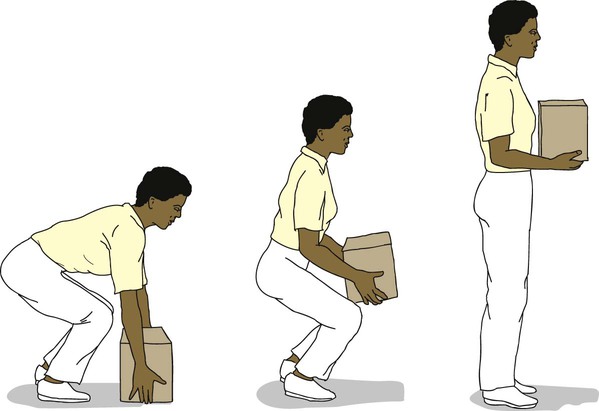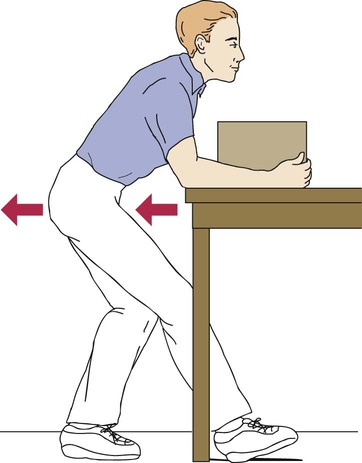• Define the key terms and key abbreviations listed in this chapter. • Explain the purpose and rules of body mechanics. • Explain how ergonomics can prevent work-related injuries. • Identify the causes, signs, and symptoms of back injuries. • Position persons in the basic bed positions and in a chair. • Explain how to promote PRIDE in the person, the family, and yourself. Base of support is the area on which an object rests. A good base of support is needed for balance (Fig. 13-1, p. 162). When standing, your feet are your base of support. Stand with your feet apart for a wider base of support and more balance. • Bend your knees and squat to lift a heavy object (Fig. 13-2, p. 162). Do not bend from your waist. Bending from your waist places strain on small back muscles. • Hold items close to your body and base of support (see Fig. 13-2). This involves upper arm and shoulder muscles. Holding objects away from your body places strain on small muscles in your lower arms. All activities require good body mechanics. Follow the rules in Box 13-1, p. 162. • Force—the amount of physical effort needed for a task. Lifting or transferring heavy persons, preventing falls, and sudden motions are examples. • Repeating action—doing the same motion or series of motions often or continually. Re-positioning persons and transfers to and from beds, chairs, and commodes without adequate rest breaks are examples. • Awkward postures—assuming positions that place stress on the body. Examples are reaching above shoulder height, kneeling, squatting, leaning over a bed, bending, or twisting the torso while lifting. • Heavy lifting—manually lifting people who cannot move themselves. See Promoting Safety and Comfort: Ergonomics. The person must always be properly positioned. Regular position changes and good alignment promote comfort and well-being. Breathing is easier. Circulation is promoted. Pressure ulcers (Chapter 25) and contractures (Chapter 23) are prevented. A contracture is the lack of joint mobility caused by abnormal shortening of a muscle. • Ask a co-worker to help you if needed. • Explain the procedure to the person. • Be gentle when moving the person. • Use pillows as directed by the nurse for support and alignment. • Provide for comfort after positioning. (See the inside of the front cover.) • Place the call light and needed items within reach after positioning. • Complete a safety check before leaving the room. (See the inside of the front cover.)
Body Mechanics
Principles of Body Mechanics

Ergonomics
Work-Related MSDs
Positioning the Person
![]()
Stay updated, free articles. Join our Telegram channel

Full access? Get Clinical Tree


Nurse Key
Fastest Nurse Insight Engine
Get Clinical Tree app for offline access


